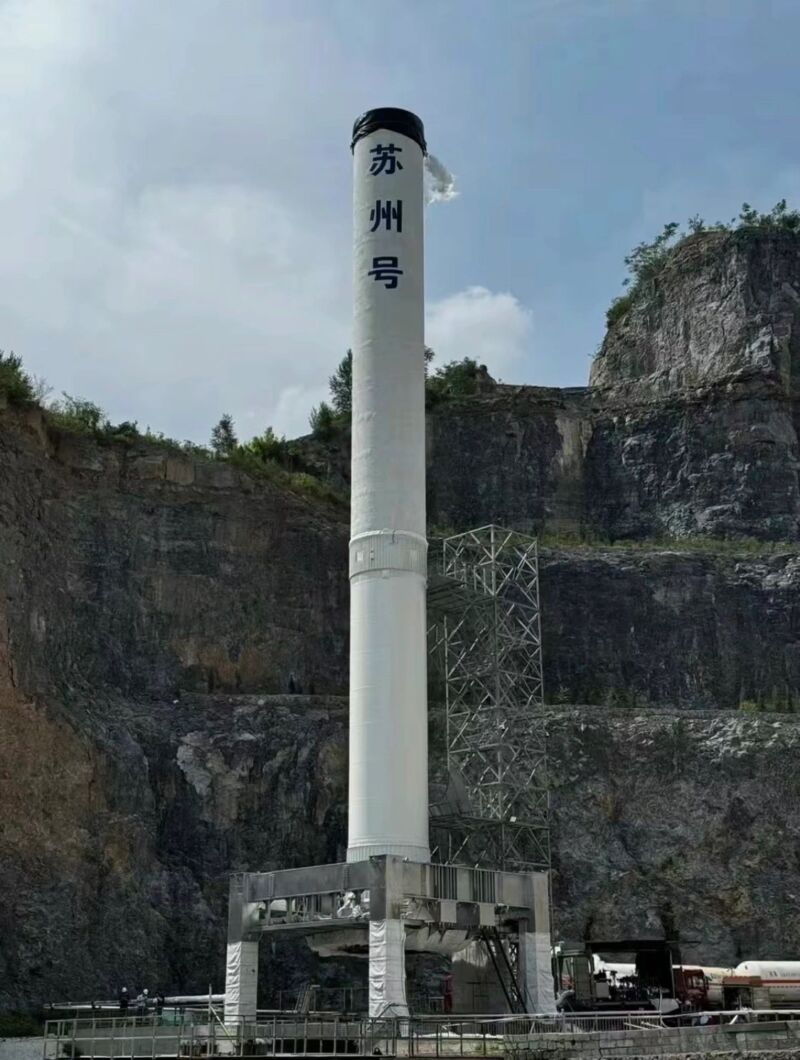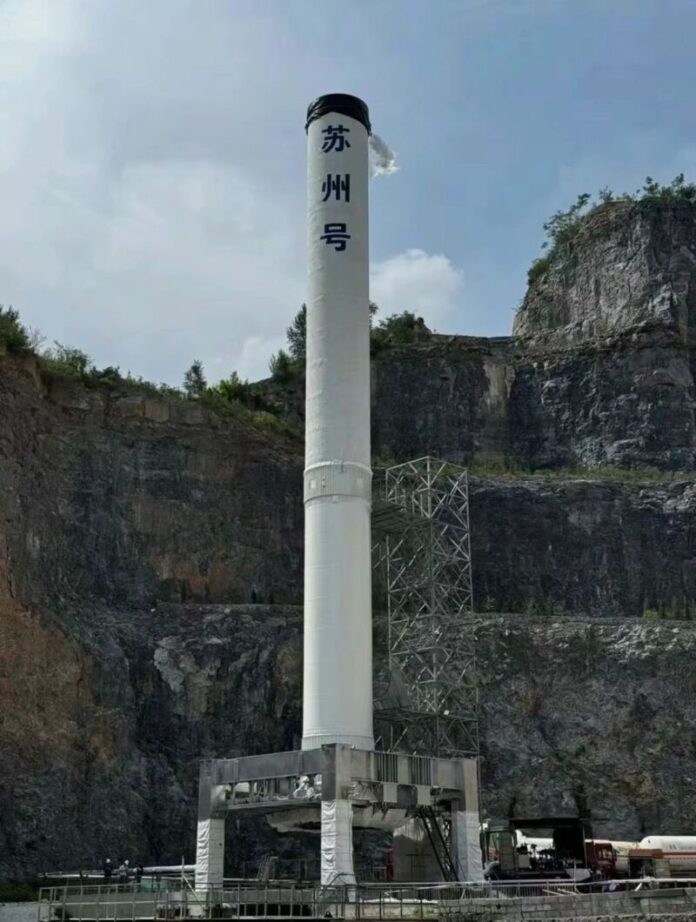
Enlarge / The Tianlong-3 rocket as seen on its test stand before the anomaly. (credit: Space Pioneer)
One of the most promising Chinese space startups, Space Pioneer, experienced a serious anomaly this weekend while testing the first stage of its Tianlong-3 rocket near the city of Gongyi.
The rocket was undergoing a static fire test of the stage, in which a vehicle is clamped to a test stand while its engines are ignited, when the booster broke free. According to a statement from the company, the rocket was not sufficiently clamped down and blasted off from the test stand "due to a structural failure."
Video of the accidental ascent showed the rocket rising several hundred meters into the sky before it crashed explosively into a mountain 1.5 km away from the test site. (See various angles of the accident here, on the social media site X, or on Weibo.) The statement from Space Pioneer sought to downplay the incident, saying it had implemented safety measures before the test, and there were no casualties as a result of the accident. "The test site is far away from the urban area of Gongyi," the company said.
Read 7 remaining paragraphs | Comments
Ars Technica - All contentContinue reading/original-link]




